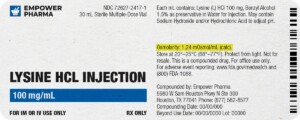Adverse reactions span endocrine, hepatic, metabolic, and dermatologic domains. In females, virilization-manifesting as deepened voice, hirsutism, acne, menstrual irregularity, or clitoral hypertrophy-can occur even at therapeutic doses; early discontinuation may avert permanence.
Males may experience testicular atrophy, oligospermia, infertility, libido fluctuation, and, less commonly, gynecomastia.
Because oxandrolone is 17α-alkylated, prolonged courses raise the risk of cholestatic hepatitis, jaundice, peliosis hepatis, or hepatic adenomas that can progress to carcinoma. Routine monitoring of transaminases and bilirubin is therefore indispensable.
Metabolic effects include reductions in HDL-C, elevations in LDL-C, and diminished glucose tolerance, all of which increase cardiovascular risk. Fluid retention and edema may exacerbate hypertension or heart failure.
Psychiatric sequelae-irritability, insomnia, or mood swings-and dermatologic issues such as oily skin and accelerated male-pattern alopecia have also been reported.[5]


